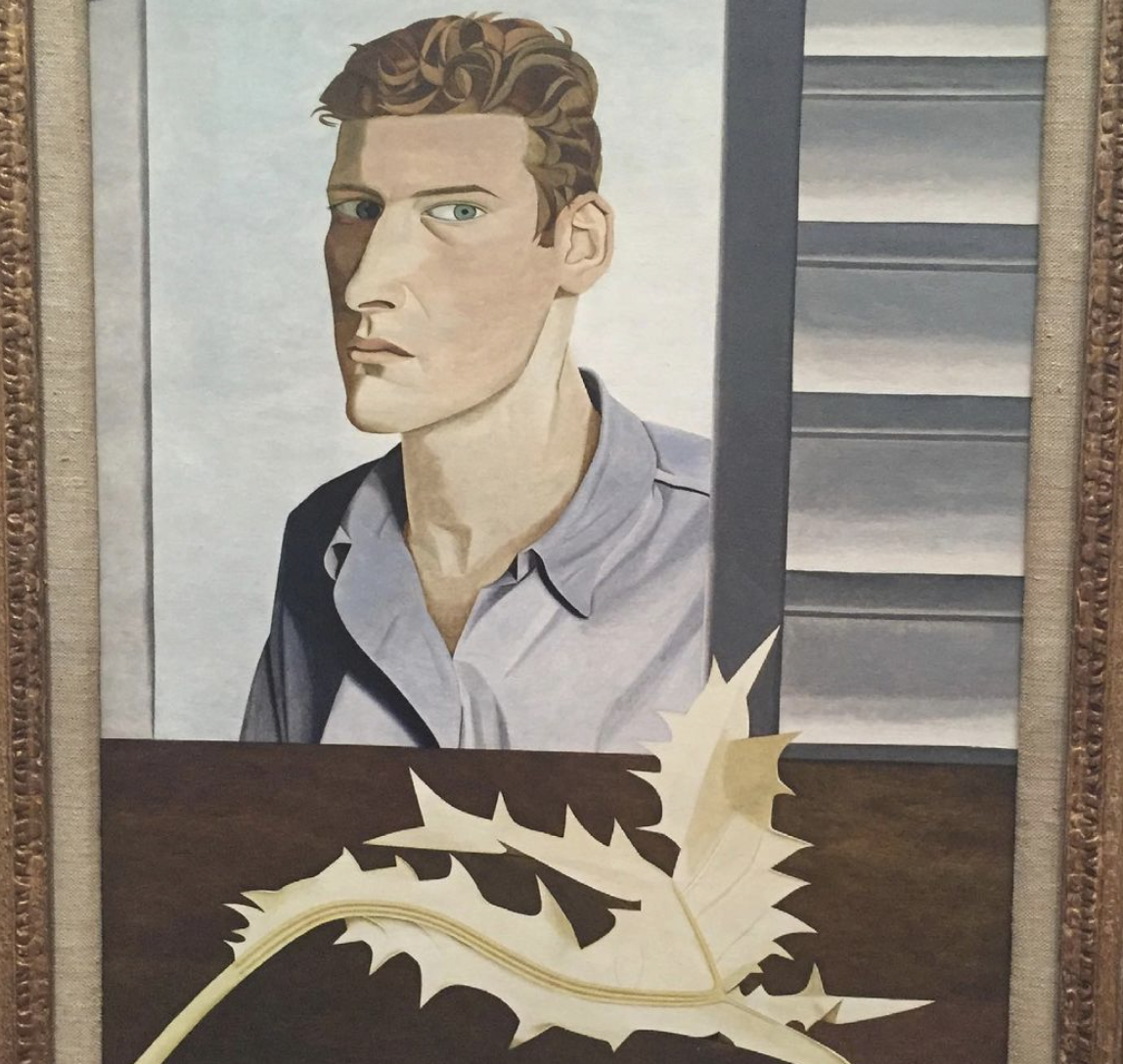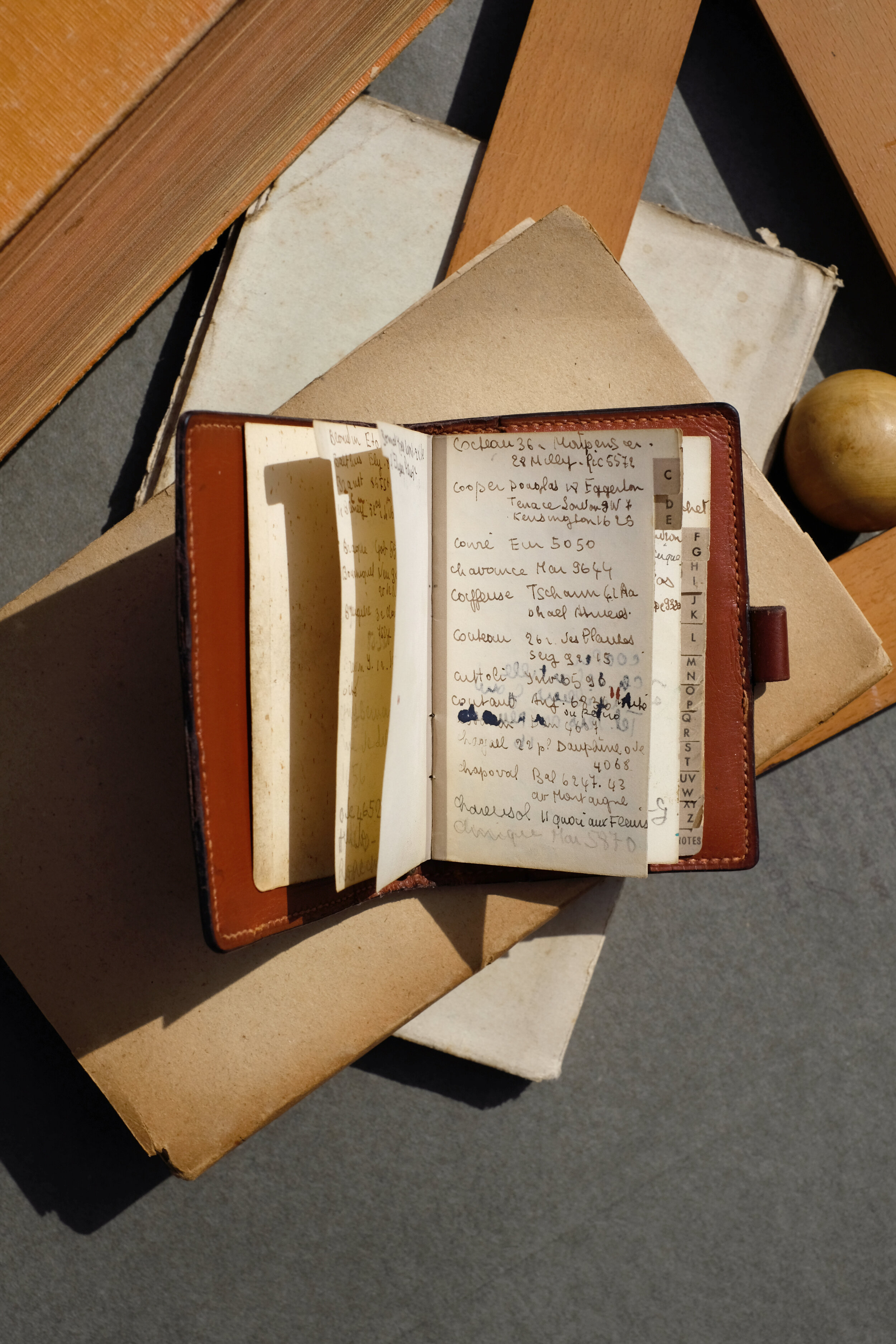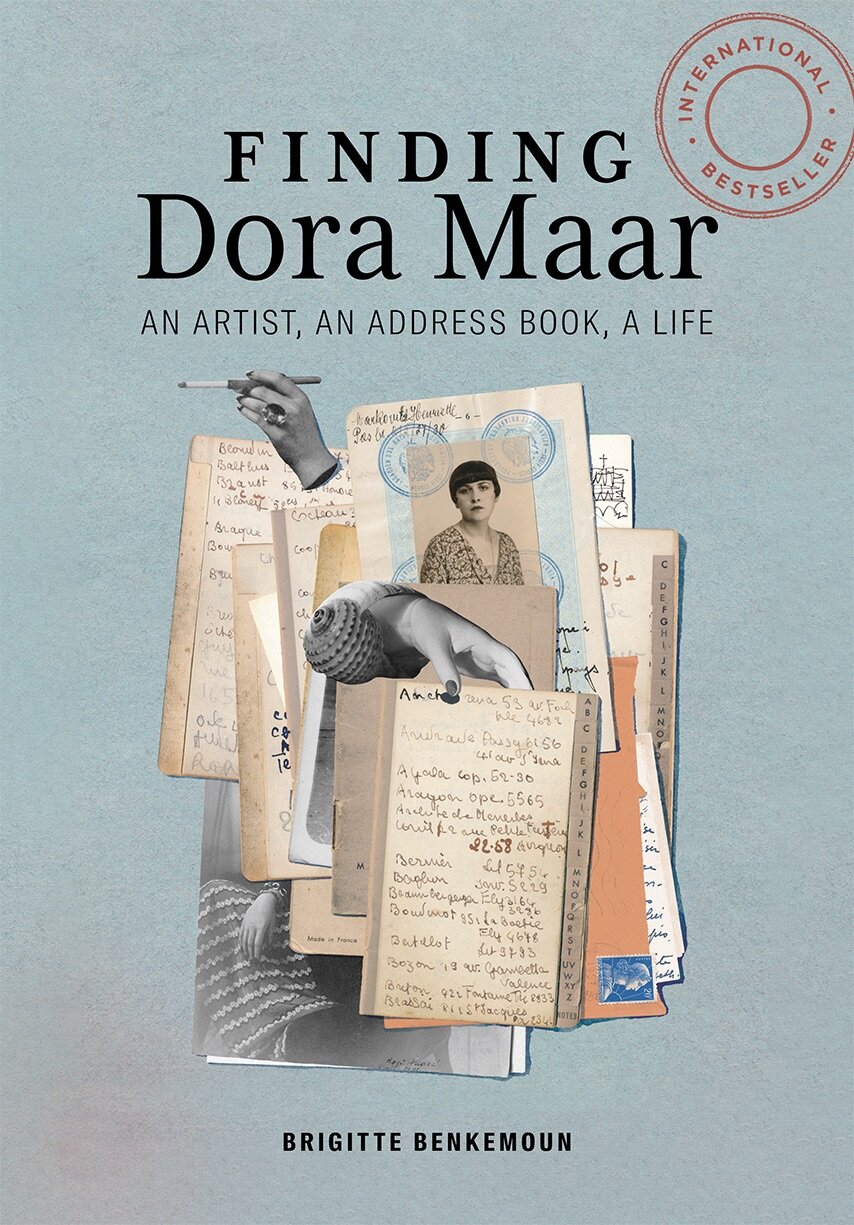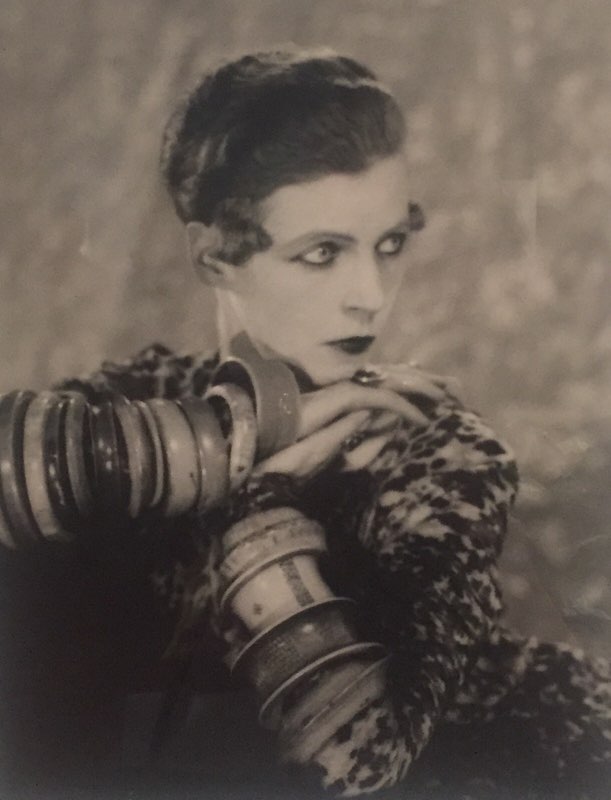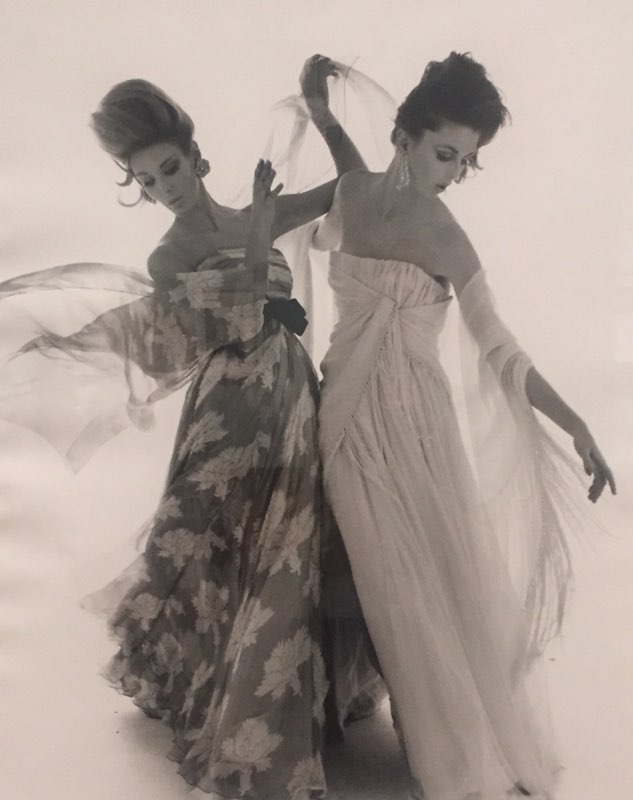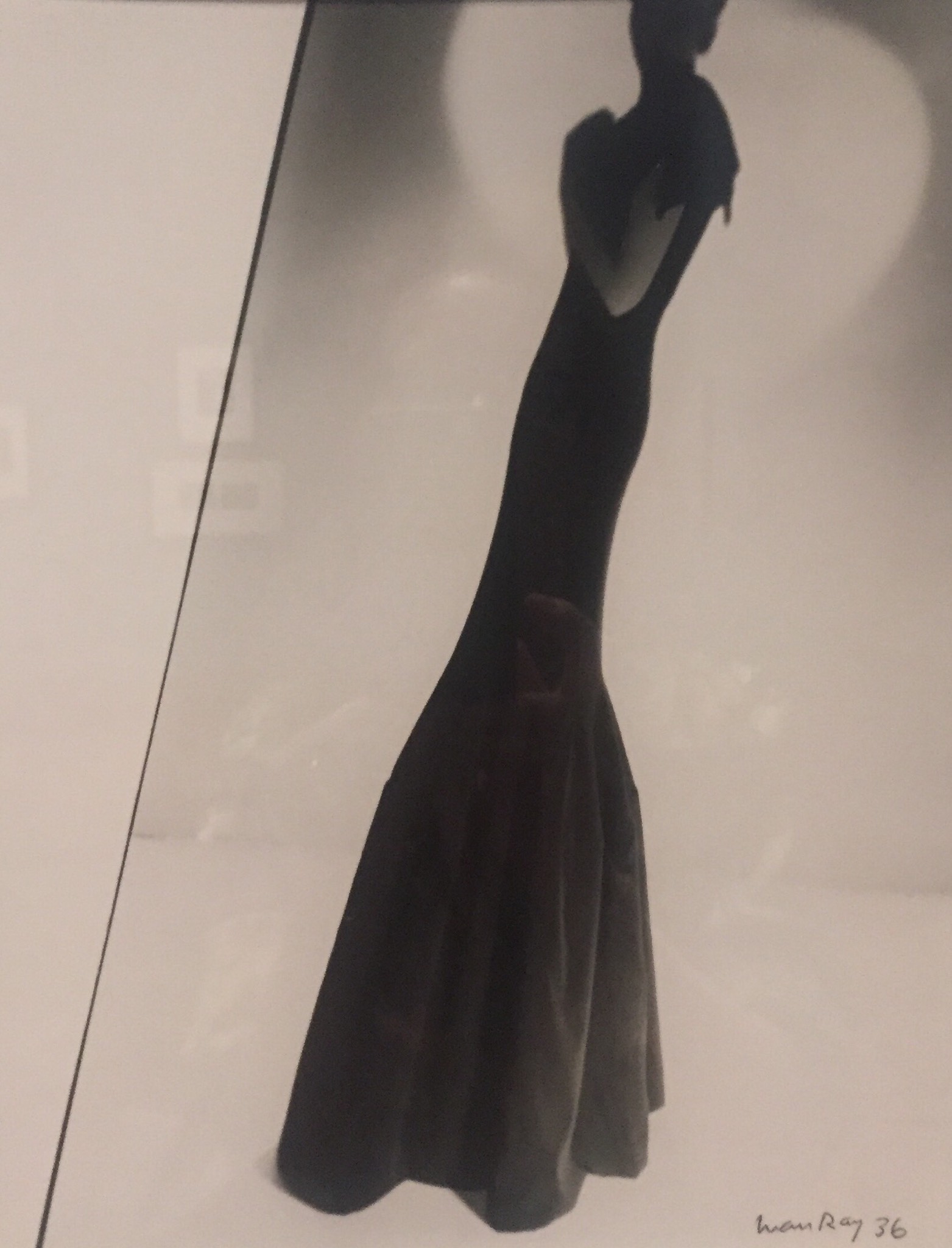This 1946 painting by Lucian Freud from the Tate was on view at the Getty when I saw it as part of their marvelous London Calling show in 2016. Now that I am deep into Vol 2 of William Feaver’s exhaustive—and sometimes exhausting—life of Freud, I realize that although he is known for his craggy, let-it-all-hang-out later work of nudes of all shapes and sizes, it is the early work that has the most resonance for me. Look at the suspicious, unsettling glance in this self portrait and the surrealist thistle that only enhances the prickly nature of the ensemble. I’m feeling a bit like this. Though Covid precautions are waning, I’m wary of the next months. I long to travel to see this again in London in its permanent home.
Finding Dora Maar-an Ebay purchase leads to treasure
We've all had the fantasy of being able to know what is inside the private diaries, letters, or yes, address books of celebrities. Brigitte Benkemoun's husband bought a replacement Hermes agenda on Ebay ( I happen to know these very well, I still have a desk black one with my initials and a small pocket red one similar to the one her husband was looking for though mine are consigned to a file cabinet now when I cruelly abandoned them first for Filofax and then the Contacts section of my iPhone). When it arrived, she was overwhelmed to discover the names of very famous French artists, poets and writers of the 20th century like Balthus, Brassai, Breton, Cocteau, Eluard--along with a plumber and architect and a hairdresser. It did not take her long to learn it was the agenda of none other than Dora Maar, known principally as the Weeping Woman model for Picasso and his lover for many years who was devastated when he abandoned her for Francoise Gilot (and others) and became a religious recluse in Mesnerbes, Provence. Benkemoun imagines the relationship Maar might have had with each entry, often importing her own conclusions when facts do not present themselves, but it is still a very engaging and often moving promenade down memory lane. The book has been published by the Getty, where the retrospective of Maar's important work as a photographer and artist was shown, exhumed first at the Pompidou. I had my own chase of Dora Maar and treasure her letters to me.
The Getty's Icons of Style fashion photography exhibition beats Instagram
The Getty's fashion photography exhibition Icons of Style is more modest Yin to the Met Museum Heavenly Bodies extravagant Yang. There we experience actual fashion. Here we experience it largely by its more quotidian delivery system: an ad or a spread in an increasingly moribund genre, the print magazine. (The recent announcement by Conde Nast that they are selling three more of their titles including fashion magazine W is testament to this trend.) It’s still mostly via photographs that we salivate over a dress or pair of shoes artfully displayed or that we are made ambitious to look a certain way. What will we do without these commissioning print magazines which represent extraordinary curation (and expenditures)?
A general chronological survey from 1911-2011, the Getty exhibition goes down easy. Some of these images are familiar: Helmut Newton's Lisa Taylor in her man-spread, Avedon’s Dovima with her elephants. The big guns are all here, and blessedly not just the males. Some delightful excerpts from film and video are interspersed.
But what inevitably drew my eye were the lesser known vintage gems. (Dora Maar's Model in Swimsuit, Man Ray's Model wearing a Gown, Baron de Meyer's Frightened by a Mouse ) There is true art in these fashion photographs, some counterposed with architecture, others in very original formal but playful compositions There’s a great deal of humor in surreal juxtapositons that bring a smile or create mystery.
I attended a panel with some famous models including Cheryl Tiegs and Beverly Johnson. Alas, none spoke in depth of the actual work as art, but more of long hours, branding, acting, the celebs they met, how they broke through, which is after all what the sold-out crowd came to hear. There was too little conversation about the many male photographers and stylists accused of systemic abuse. (At least one included in the exhibition)
The conversation seems to be suggesting this is a cultural moment for female empowerment. But hey, y’all. I know we thought we had this licked in the sixties. We need to go back to the ur-texts: Simone de Beauvoir, Germaine Greer, Betty Friedan, et al. Let’s raise awareness and not be fooled by the fact that media is paying attention. It’s in the actual workplace that change must come about, and models need to be talking seriously about that as much as anyone.
Certainly the crowd was not the typical art crowd and the Getty got a lot of new bodies in the door—and that’s the goal for many museums these days. The curator of the exhibition was there, I was sorry he wasn’t invited to say a few words. There are other events attached to the exhibition which are probably more in keeping with discussions of the actual work.
At the Annenberg Center for Photography there is a Library of Congress companion exhibition that brings other vintage photography front and center. And I’ve been delving into the Los Angeles Public Library online collections, newly databased, also worth a look.
Photography (with writing as a close second) has probably both gained and suffered more because of the internet than any other medium. As in the debate over a hard copy of a book vs the Kindle, we know many readers have gone back to the real thing. Instagram, with all its virtual breadth and disposability cannot match the in-person richness of these professional photographs.
The exhibition runs through October 21st.
